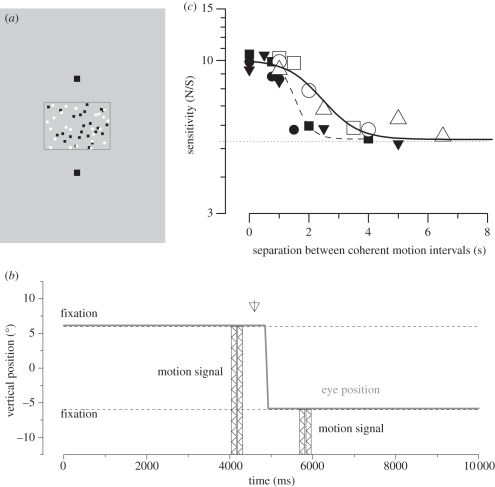Figure 1.
Integration of motion signals across saccades. (a) Illustration of experimental setup. Subjects fixated above a field of dynamic random noise. When cued they saccaded to a target below this field. (b) Timeline of stimuli presentation. For two brief (150 ms) moments, a proportion of the dots moved coherently, both leftwards or rightwards. One motion signal was presented before the saccade, the other after. Subjects had to identify the direction of motion in two-alternative forced choice. (c) Coherence sensitivity (inverse of minimum coherence to support reliable direction discrimination) as a function of separation of the two pulses. The dashed line shows the sensitivity for just a single motion signal. Presenting two stimuli with brief separation, either in fixation or straddling saccades, doubles the sensitivity, implying total integration. The integration continues for longer when interspersed with a saccade than when presented during fixation (filled symbols indicate fixation and open symbols indicate saccade).

